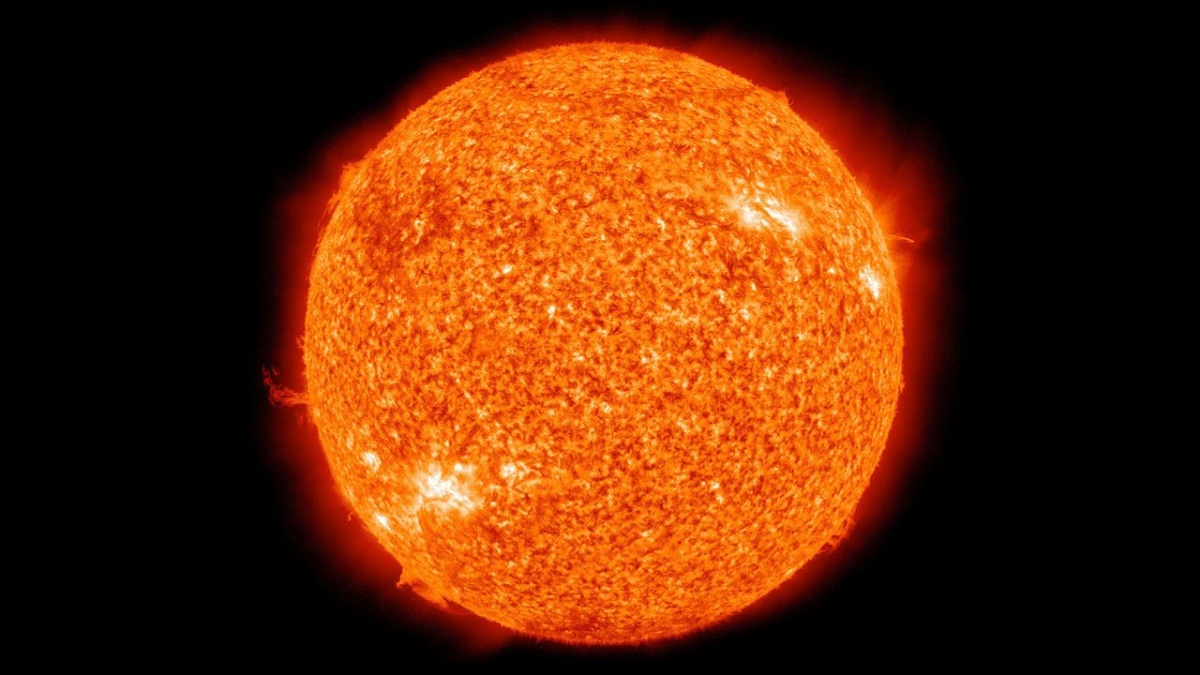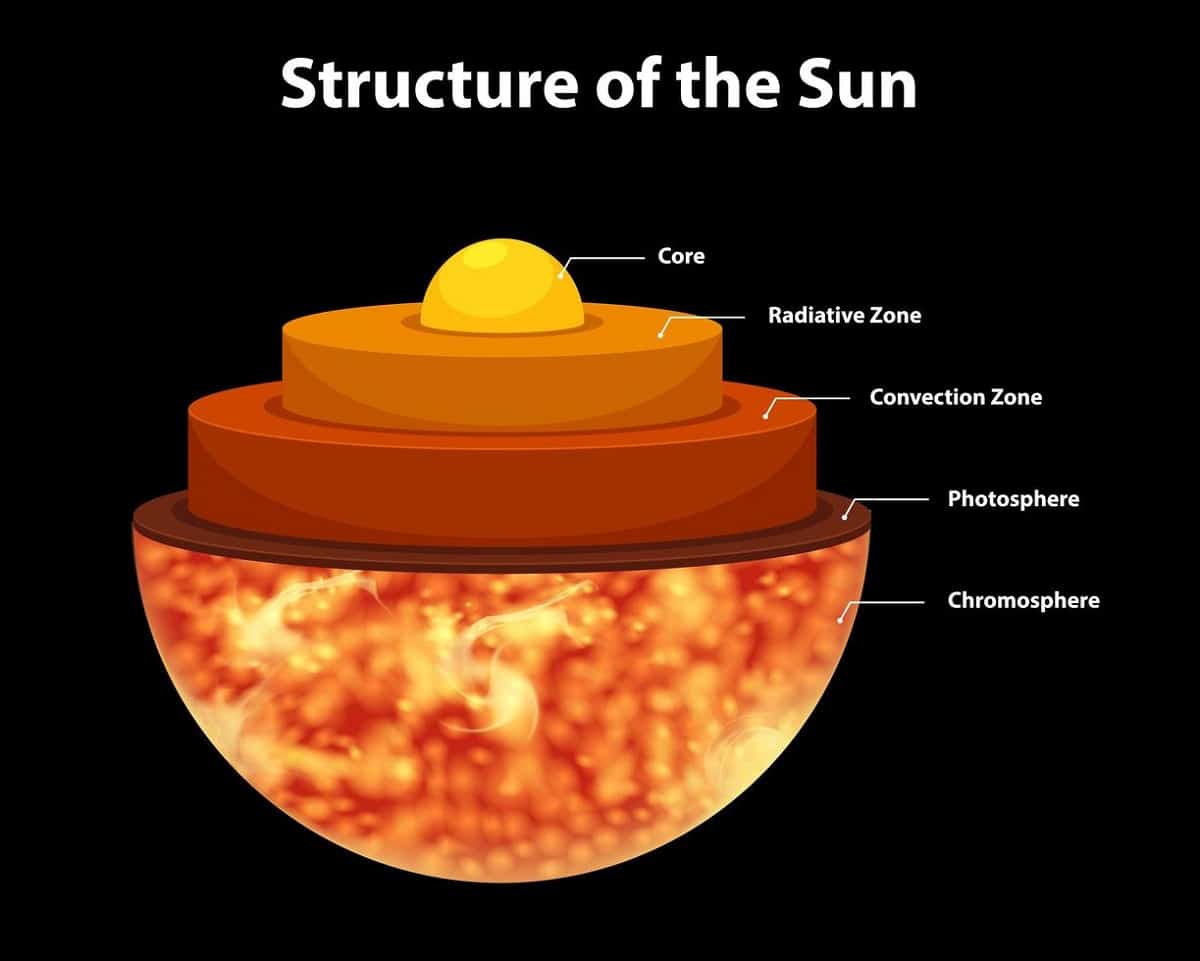
The star that constitutes the center of solar system and the closest to the earth is the sun. Thanks to the sun, energy in the form of light and heat is provided to our planet. It is this star that originates the different climatic conditions, ocean currents and seasons of the year. That is, it is thanks to the sun that the primary conditions that are necessary for the existence of life are given. The sun features they are unique and are quite interesting to do.
Therefore, we are going to dedicate this article to tell you what are the characteristics of the sun, its importance and some curiosities.
From

We must bear in mind that the sun is the most important celestial object for the survival of all living beings. The materials with which they were formed are estimated to have started to agglutinate due to the action of gravity. The force of gravity is what produced that matter was accumulating and the temperature was also increasing. It reached a point where the temperature was critical with values of around one million degrees Celsius. It is at this time where, due to the high temperature and the action of gravity together with matter, a nuclear reaction began, which is what gave rise to the stable star that we know today. It can be said that the center of all these nuclear reactions is a reactor.
In general terms, we can consider the sun as a fairly typical star even though it has a mass, radius and other properties that are outside of what it does consider the average of the stars. Perhaps it is these characteristics that make it the only system of planets and stars that supports life.
Human beings have been fascinated by the sun and have created numerous ways to study it despite not being able to look at it directly. Observation of the sun is done using telescopes that have long been on earth. Nowadays, with the advancement of technology, the sun can also be studied thanks to the use of artificial satellites. With spectroscopy allows us to know the composition of the sun. Another way to study this star is meteorites. And it is that these are a source of information since they maintain the original composition of the protostellar cloud.
Sun characteristics

Some of the characteristics of the sun that make it a unique star are the following:
- The shape is practically spherical. Unlike other stars, the shape of the sun just flattens slightly at its poles. This flattening is caused by rotation. From the ground it can be seen as a perfectly circular disk.
- Its most abundant elements are hydrogen and helium.
- If measured from the ground, the angular size of the sun is about half a degree.
- The total radius is approximately 700.000 kilometers and has been estimated from its angular size. Its total diameter is approximately 109 times greater than that of the earth. Still, the sun is considered a small star.
- It has been established that the distance between the sun and the earth is considered as an astronomical unit.
- The mass of the sun can be measured from the acceleration that the earth acquires when it moves closer to it.
- It is known that the sun experiences cycles or periods of great activity and is related to magnetism. It is then that sunspots, flares or flares and eruptions of coronal mass appear.
- The density of the sun is much lower than that of the earth. This is because this star is a gaseous entity.
- One of the most popular characteristics of the sun is its luminosity. It is defined as the amount of energy that is capable of radiating per unit of time. The power of the sun is equal to more than ten raised to 23 kilowatts. For comparison, an incandescent light bulb is known to radiate less than 0.1 kilowatts.
- The effective surface temperature of the sun is around 6.000 degrees. It is an average temperature, although its core and crown are much hotter regions.
Classification and structure of the sun

Once we have seen the characteristics of the sun, we will see how it is classified in astronomy. It is considered a yellow dwarf star. These stars are in the category that has the mass between 0.8-1.2 times the mass of the Sun. Stars have certain spectral characteristics according to their luminosity, mass, and temperature.
To facilitate the study and knowledge of the characteristics of the sun, its structure is divided into 6 layers. It is distributed in very well differentiated regions and begins from the interior. It's divided in:
Solar core
It is about 1/5 of the solar radius in size. This is where all the energy that radiates from the high temperatures is produced. Here temperatures of fifteen million degrees Celsius are reached. Also such high pressures make it in an area equivalent to a nuclear fusion reactor. The force of gravity acts as a stabilizer of the reactor in which reactions take place between the hydrogen nuclei that become helium nuclei. It is so known as nuclear fusion.
Some heavier elements are also produced, such as carbon and oxygen. All these reactions release energy that travels through the interior of the sun to spread throughout the solar system. It is estimated that every second the sun transforms five million tons of mass into pure energy.
Radioactive zone
The energy that comes from the nucleus travels out to a radiation mechanism. In this area all existing matter is in a plasma state. The temperature here is not as high as the core, but it reaches about five million kelvin. The energy is transformed into photons that are transmitted and reabsorbed numerous times by the particles that make up the plasma.
Convective zone
This zone is the part where the photons from the radiative zone arrive and the temperature is approximately 2 million kelvin. The transport from energy becomes by convection since here the matter is not so ionized. The transport of energy powered by convection is produced by the movement of eddies of gases at different temperatures.
Photosphere
It is the part of the apparent surface of the star and the one that we always see. The sun is not entirely solid but is made of plasma. You can see the photosphere through a telescope as long as they have a filter so that it does not affect our eyesight.
Chromosphere
It is the outermost part of the photosphere and is equivalent to what has been its atmosphere. The luminosity here is more reddish and has a variable thickness with a temperature that ranges between 5 and 15 thousand degrees.
Corona
It is a layer that has an irregular shape and extends over several solar radii. It is visible to the naked eye and its temperature is around 2 million kelvin. It is still clear why the temperature of this layer is so high, but they are related to the intense magnetic fields that the sun produces.
I hope that with this information you can learn more about the characteristics of the sun.